Abstract
OBJECTIVES: This study examined the relationship between access and use of primary care physicians as sources of first contact and continuity with the medical system. METHODS: Data from the 1987 National Medical expenditure Survey were used to examine the effects of access on use of primary care physicians as sources of first contact for new episodes of care (by logistic regression) and as sources of continuity for all ambulatory visits (by multi-variate linear regression). RESULTS: No after-hours care, longer office waits, and longer travel times reduced the chances of a first-contact visit with a primary care physician for acute health problems. Longer appointment waits, no insurance, and no after-hours care were associated with lower levels of continuity. Generalists provided more first-contact care than specialists acting as primary care physicians, largely because of their more accessible practices. CONCLUSIONS: These data provide support for the linkage between access and care seeking with primary care physicians.
Full text
PDF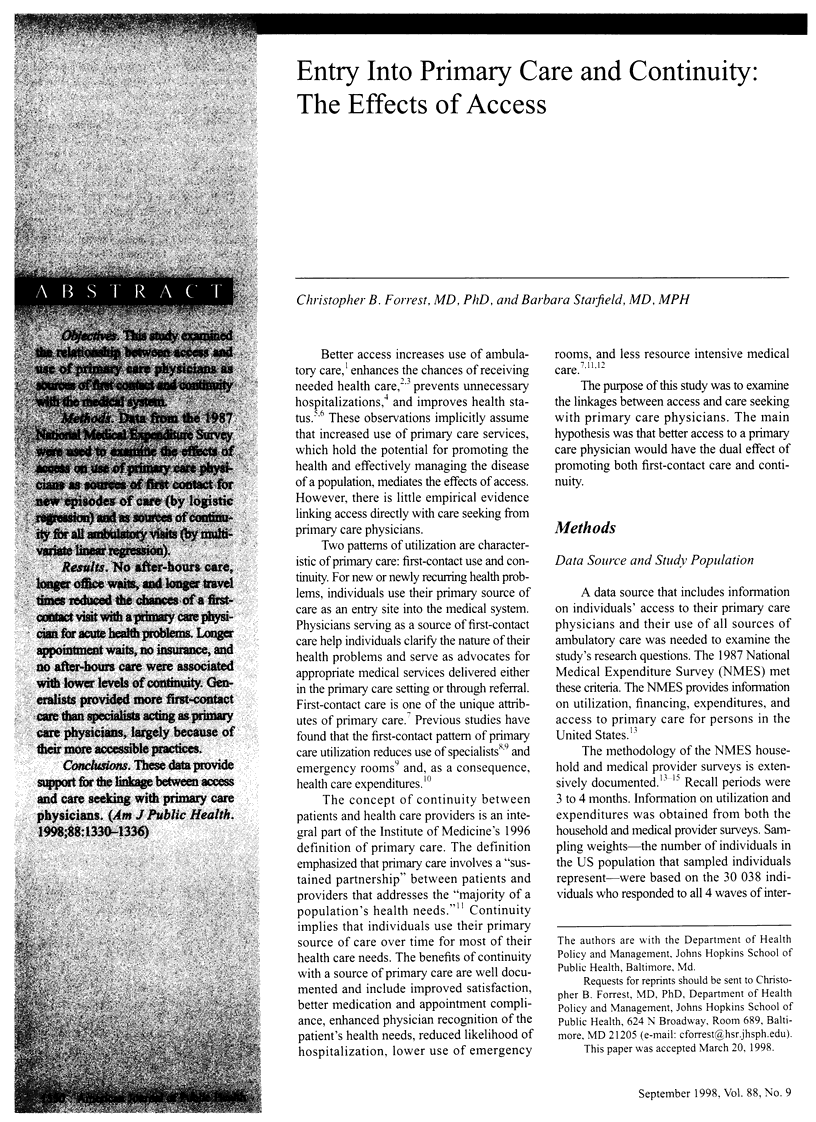

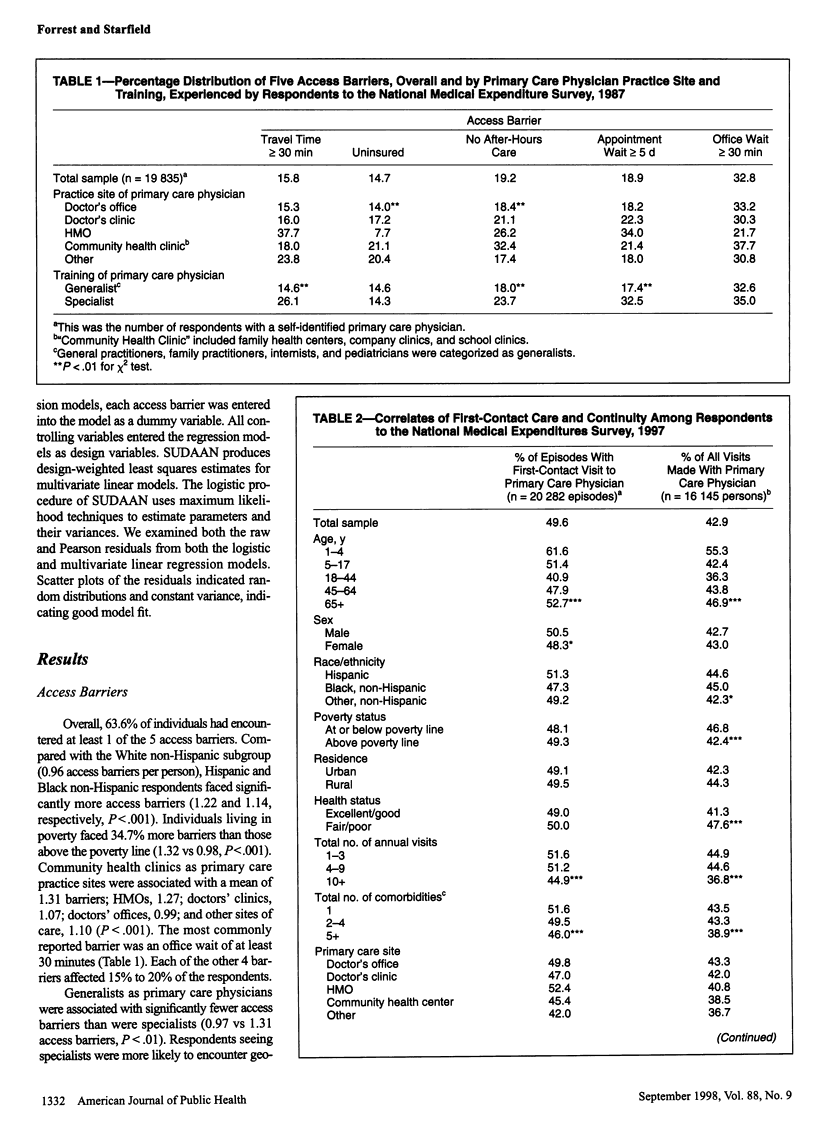
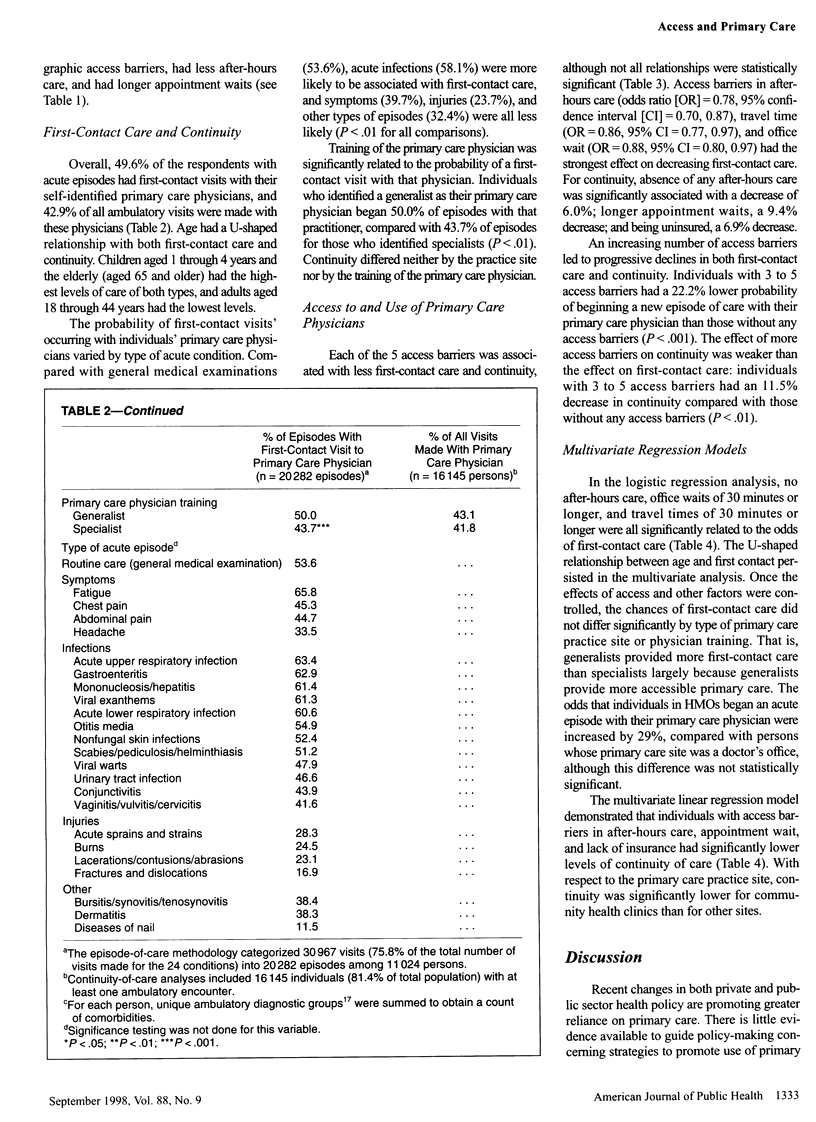
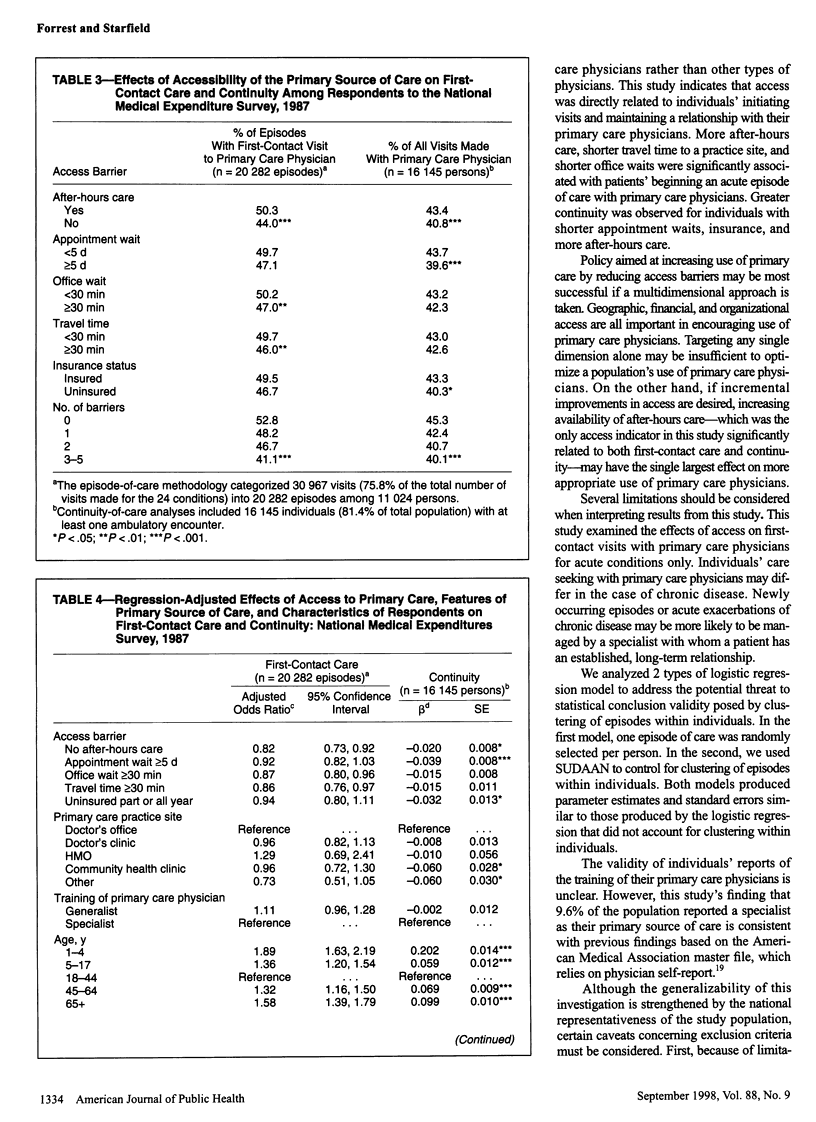
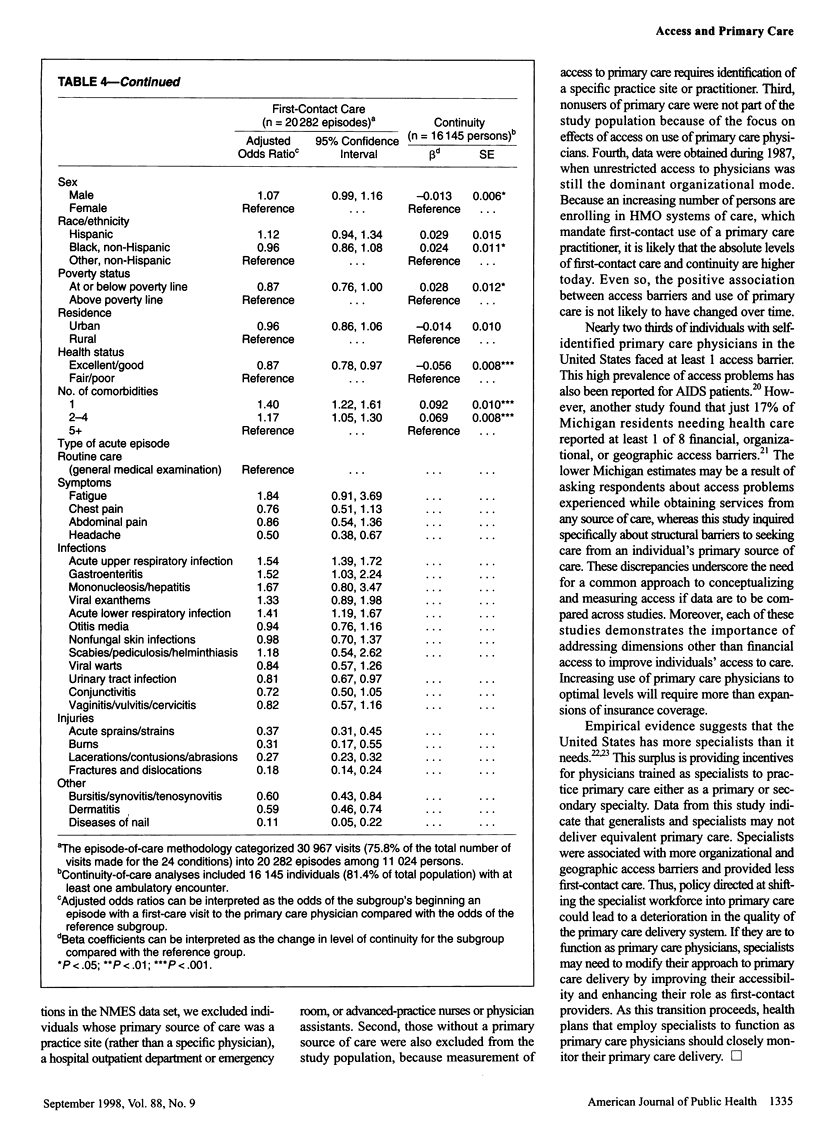
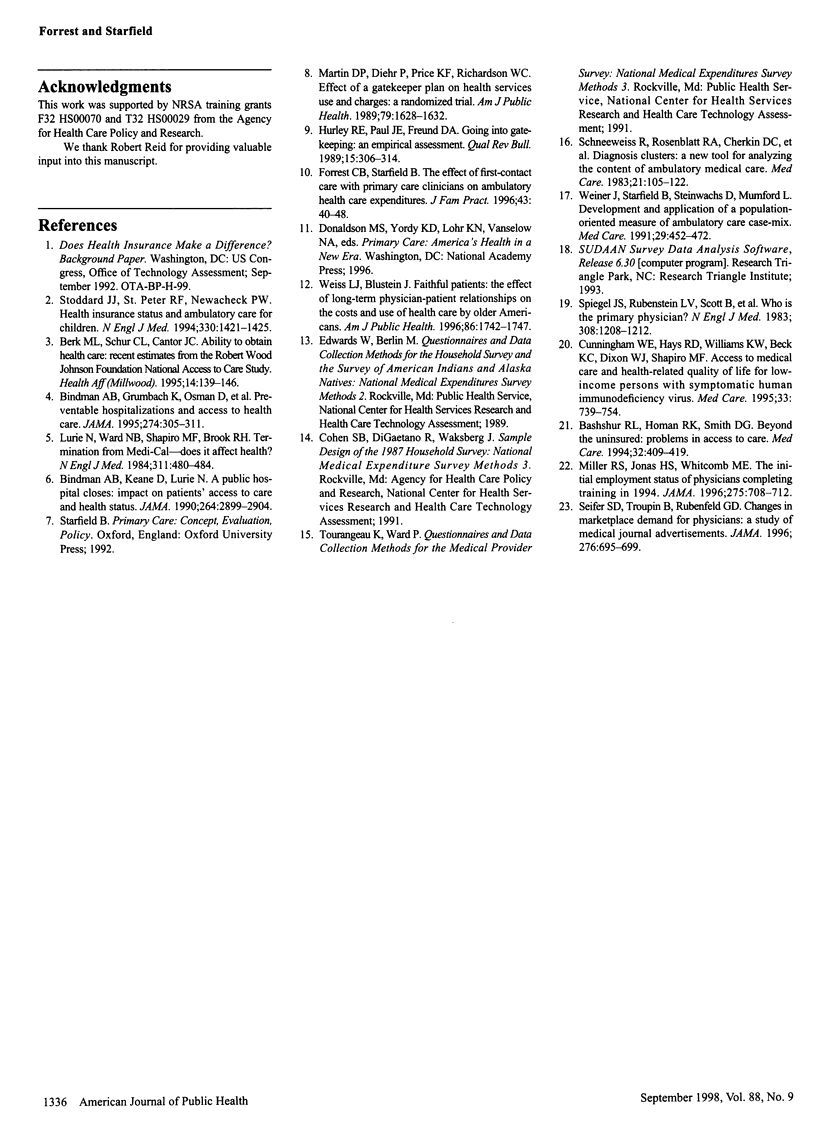
Selected References
These references are in PubMed. This may not be the complete list of references from this article.
- Bashshur R. L., Homan R. K., Smith D. G. Beyond the uninsured: problems in access to care. Med Care. 1994 May;32(5):409–419. doi: 10.1097/00005650-199405000-00001. [DOI] [PubMed] [Google Scholar]
- Berk M. L., Schur C. L., Cantor J. C. Ability to obtain health care: recent estimates from the Robert Wood Johnson Foundation National Access to Care Survey. Health Aff (Millwood) 1995 Fall;14(3):139–146. doi: 10.1377/hlthaff.14.3.139. [DOI] [PubMed] [Google Scholar]
- Bindman A. B., Grumbach K., Osmond D., Komaromy M., Vranizan K., Lurie N., Billings J., Stewart A. Preventable hospitalizations and access to health care. JAMA. 1995 Jul 26;274(4):305–311. [PubMed] [Google Scholar]
- Bindman A. B., Keane D., Lurie N. A public hospital closes. Impact on patients' access to care and health status. JAMA. 1990 Dec 12;264(22):2899–2904. doi: 10.1001/jama.264.22.2899. [DOI] [PubMed] [Google Scholar]
- Cunningham W. E., Hays R. D., Williams K. W., Beck K. C., Dixon W. J., Shapiro M. F. Access to medical care and health-related quality of life for low-income persons with symptomatic human immunodeficiency virus. Med Care. 1995 Jul;33(7):739–754. doi: 10.1097/00005650-199507000-00009. [DOI] [PubMed] [Google Scholar]
- Forrest C. B., Starfield B. The effect of first-contact care with primary care clinicians on ambulatory health care expenditures. J Fam Pract. 1996 Jul;43(1):40–48. [PubMed] [Google Scholar]
- Hurley R. E., Paul J. E., Freund D. A. Going into gatekeeping: an empirical assessment. QRB Qual Rev Bull. 1989 Oct;15(10):306–314. doi: 10.1016/s0097-5990(16)30308-6. [DOI] [PubMed] [Google Scholar]
- Lurie N., Ward N. B., Shapiro M. F., Brook R. H. Termination from Medi-Cal--does it affect health? N Engl J Med. 1984 Aug 16;311(7):480–484. doi: 10.1056/nejm198408163110735. [DOI] [PubMed] [Google Scholar]
- Martin D. P., Diehr P., Price K. F., Richardson W. C. Effect of a gatekeeper plan on health services use and charges: a randomized trial. Am J Public Health. 1989 Dec;79(12):1628–1632. doi: 10.2105/ajph.79.12.1628. [DOI] [PMC free article] [PubMed] [Google Scholar]
- Miller R. S., Jonas H. S., Whitcomb M. E. The initial employment status of physicians completing training in 1994. JAMA. 1996 Mar 6;275(9):708–712. [PubMed] [Google Scholar]
- Schneeweiss R., Rosenblatt R. A., Cherkin D. C., Kirkwood C. R., Hart G. Diagnosis clusters: a new tool for analyzing the content of ambulatory medical care. Med Care. 1983 Jan;21(1):105–122. doi: 10.1097/00005650-198301000-00008. [DOI] [PubMed] [Google Scholar]
- Seifer S. D., Troupin B., Rubenfeld G. D. Changes in marketplace demand for physicians: a study of medical journal recruitment advertisements. JAMA. 1996 Sep 4;276(9):695–699. [PubMed] [Google Scholar]
- Spiegel J. S., Rubenstein L. V., Scott B., Brook R. H. Who is the primary physician? N Engl J Med. 1983 May 19;308(20):1208–1212. doi: 10.1056/NEJM198305193082007. [DOI] [PubMed] [Google Scholar]
- Stoddard J. J., St Peter R. F., Newacheck P. W. Health insurance status and ambulatory care for children. N Engl J Med. 1994 May 19;330(20):1421–1425. doi: 10.1056/NEJM199405193302006. [DOI] [PubMed] [Google Scholar]
- Weiner J. P., Starfield B. H., Steinwachs D. M., Mumford L. M. Development and application of a population-oriented measure of ambulatory care case-mix. Med Care. 1991 May;29(5):452–472. doi: 10.1097/00005650-199105000-00006. [DOI] [PubMed] [Google Scholar]
- Weiss L. J., Blustein J. Faithful patients: the effect of long-term physician-patient relationships on the costs and use of health care by older Americans. Am J Public Health. 1996 Dec;86(12):1742–1747. doi: 10.2105/ajph.86.12.1742. [DOI] [PMC free article] [PubMed] [Google Scholar]


